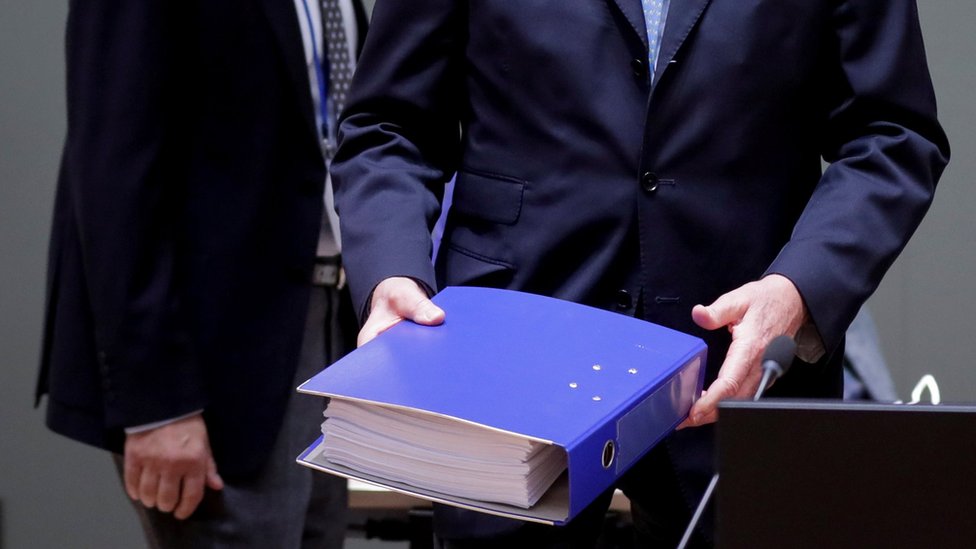
BBC News has obtained a full copy of the post-Brexit trade deal agreed by the UK and the EU, setting out the shape of their relationship for years to come. Parliament will vote on the plan next week, but so far Downing Street has published only a short summary, rather than the full document. Our economics editor, Faisal Islam, has been looking at the details.
Late into Christmas Eve, UK government and European lawyers were hard at work completing the process of updating the text of the post-Brexit trade deal into formal language, a process known as legally scrubbing.
Because whatever the general relief over the broad outline of this deal, there are nearly 1,300 pages of legal text that will determine every aspect of the hundreds of billions in trade between the UK and EU.
Some of the thorniest negotiation points have made it into the final text.
Innocuous and arcane sounding articles and annexes could have a huge impact on industry and government policy.
For example, the restrictions compensation for unfair subsidies to companies "do not apply" in situations such as natural disasters, exempting the EU's huge current pandemic support package for aviation, aerospace, climate change and electric cars.
A late compromise
On electric cars, an annexe reveals a late compromise.
The EU had sought to offer tariff-free access only to those British cars that are made mostly with European parts. That will now be phased in over six years, but is less generous than the UK ask.
This should be just about enough for Japanese owners of massive UK plants Nissan and Toyota's current production, but raises questions about future rounds of investment.
There is a clear commitment not to lower standards on the environment, workers' rights and climate change from those that exist now and mechanisms to enforce it.
But there is also a mutual right to "rebalance" the agreement if there are "significant divergences" in future that is capable of "impacting trade".
These go way beyond standard free-trade agreements such as those between the EU and Canada or Japan, reflecting the UK's history in the single market.
The text reads like these mechanisms are designed to be used, and created to ensure that both sides remain close to each other's regulatory orbit.
Follow Faisal on Twitter.
https://news.google.com/__i/rss/rd/articles/CBMiLGh0dHBzOi8vd3d3LmJiYy5jby51ay9uZXdzL2J1c2luZXNzLTU1NDQ5MDM10gEwaHR0cHM6Ly93d3cuYmJjLmNvLnVrL25ld3MvYW1wL2J1c2luZXNzLTU1NDQ5MDM1?oc=5
2020-12-25 20:20:00Z
CBMiLGh0dHBzOi8vd3d3LmJiYy5jby51ay9uZXdzL2J1c2luZXNzLTU1NDQ5MDM10gEwaHR0cHM6Ly93d3cuYmJjLmNvLnVrL25ld3MvYW1wL2J1c2luZXNzLTU1NDQ5MDM1
Tidak ada komentar:
Posting Komentar